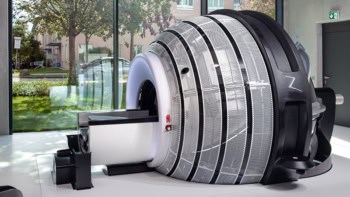Atrial fibrillation – irregular heartbeats caused by abnormal electrical signals from the heart’s upper chambers – is the most common cardiac rhythm disorder. If left untreated, atrial fibrillation significantly increases the risk of stroke and heart failure. The disorder is typically treated using radiofrequency (RF) ablation, in which a catheter inserted into the heart delivers RF energy to destroy the cardiac tissue creating the erratic electrical signals.
To guide this ablation and increase treatment precision, scientists at Johns Hopkins University have created personalized digital replicas of the upper chambers of the heart. These simulations can accurately identify where clinicians need to destroy tissue to restore the heart’s normal rhythm (Nature Biomed. Eng. 10.1038/s41551-019-0437-9).
The standard ablation procedure used to treat atrial fibrillation involves destroying tissue around the atria’s four pulmonary veins, which is where researchers believe the misfiring signals usually begin. However, patients with a persistent form of atrial fibrillation and atrial scarring don’t benefit from this approach. They often have to undergo multiple procedures because abnormal signals keep emerging from new areas of their atria. With each procedure, new scar tissue forms, which changes the atria’s electrical activity and makes targeting of the misfiring areas much harder.
“The personalized digital replicas allowed us to accurately simulate and analyse heart electrical activity and determine where tissue needs to be destroyed,” says Natalia Trayanova from Johns Hopkins University Schools of Engineering and Medicine. “The beauty of working with such replicas is that we could test for and predict where irregular heartbeats persist in ways we never could in the clinic. We ran a mock of the clinical procedure over and over again, until we were sure irregular beats will not re-emerge.”
The new approach – called optimal target identification via modelling of arrhythmogenesis (OPTIMA) – reconstructs computational models of the atria from a patient’s contrast-enhanced MRI scans, thereby personalizing the ablation procedure for each patient. As the targets are calculated offline before the clinical procedure, the approach avoids lengthy invasive mapping of the patient’s atrial electrical activity. The technique has the potential to eliminate the process of trial-and-error in treating persistent heart rhythm disorders and to prevent repeat procedures.
Clinical feasibility study
To demonstrate the feasibility of OPTIMA in patient treatments, the team used it to guide ablation in 10 patients with a persistent form of atrial fibrillation and atrial fibrotic remodelling. The researchers used the patients’ late gadolinium enhancement MRI scans to create personalized digital replicas of the diseased atria. For each model, they ran initial simulations to predict erratic electrical signals and where tissue should be destroyed. Because each ablation reconfigures the atrial electrical activity and can create new arrhythmias, they performed virtual ablations until no new arrhythmias emerged.
The researchers then took the final map of tissue target areas and imported it into the clinical system for catheter navigation. Physicians then steered the catheter towards not only the tissue that currently causes errant electrical firing, but also towards tissue that will cause misfiring in the future, as predicted by the simulations. The entire process, from obtaining an MRI to displaying the final map in the operating room took less than a week. In the future, the team hopes to shorten the entire process to a day.

Artificial intelligence helps detect atrial fibrillation
The researchers note that atrial fibrillation did not recur in any of the patients after more than 300 days of observation. Out of the 10 patients, only one returned for another ablation, for a simpler atrial arrhythmia.
“I’m very optimistic that this personalized simulation-driven approach will prove to be the missing link needed to markedly improve catheter ablation outcomes in patients with more advanced forms of atrial fibrillation,” says Hugh Calkins from Johns Hopkins Medicine. “This new approach may transform the current approach to catheter ablation of atrial fibrillation.”
The proof-of-concept study provides a promising step towards simulation-driven treatments and sets the stage for the team’s FDA-approved clinical trial, which is slated to begin later this year.



